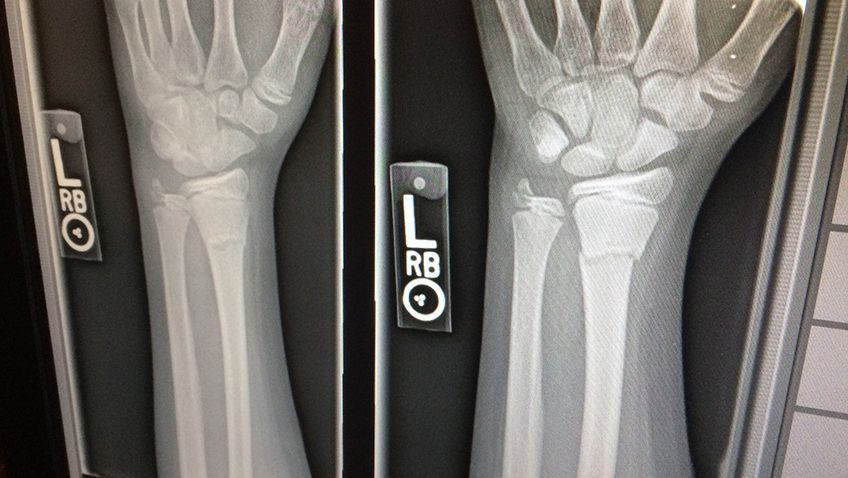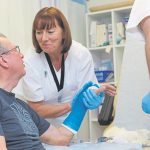Almost three million people in the UK suffer from osteoporosis and an estimated 500,000 fractures occur because of the condition every year – that’s one every minute. Yet only 25% of UK adults are familiar with the term “osteoporosis“, and it’s often seen as an “older person’s disease“.
Osteoporosis is a condition in which bones lose their strength and are more likely to break, usually following a minor bump or fall. The condition can cause painful and debilitating broken bones in various parts of the body, but the wrists, hips and spine are the most commonly affected sites.
The reality is that osteoporosis is very common; more so than most people think. The National Osteoporosis Society (NOS) report that one in two women and one in five men over the age of 50, will break a bone because of the condition. Sadly, one in five women who have broken a bone will go on to break three or more before being diagnosed with osteoporosis; with increased awareness of the condition, this could be prevented.
World Osteoporosis Day 2018 is to take place on Saturday 20 October and is all about raising awareness and getting that message across. In order to do so, the NOS are asking people to pledge to find someone under the age of 30 and tell them about the importance of bone health. Their research shows that all age groups – particularly those who haven’t heard of osteoporosis – are surprised to learn that there are positive steps we can all take to build strong bones.
Bone loss decreases in later life, so by the age of 75 years around half of the UK population will have osteoporosis as measured on a bone density scan. As you get older, bones become more fragile and generally more likely to break, whatever your bone density as measured on a scan. This is partly because of generally reduced bone strength but also the result of an increased risk of falling as we get older.
Bone health affects everyone, and healthy living is important throughout life for building strong bones and to prevent, as far as possible, the loss of bone strength that occurs as a natural part of the ageing process. Ultimately, young people who don’t do something to build strong bones during these important years may be putting themselves at greater risk of osteoporosis in later life. But for many younger people – who have busy lives and a number of external pressures – bone health is a distant priority.
There are certain circumstances which can increase a person’s risk of osteoporosis. For example, osteoporosis and fractures are more common in women than men. This is because bone loss becomes more rapid for several years after the menopause, when sex hormone levels (oestrogen) decrease. Genetics, some medications, some medical conditions, alcohol consumption, smoking and over-exercising can all be a factor.
You can assess your risk of osteoporosis by taking the NOS Stop at One quiz:
https://stopatone.nos.org.uk/
The NOS recommend the following top tips for good bone health:
- Eat a healthy, balanced diet, ensuring you meet your UK Government recommended daily intake for calcium and vitamin D.
- Maintain a healthy body weight. Low body weight makes osteoporosis and fractures more likely, because these individuals have lower amounts of bone tissue overall.
- Ensure your exercise regime includes a mix of weight-bearing and muscle-resistance exercises for strong bones.
- Don’t smoke and watch your alcohol intake.
If you know about osteoporosis, take the pledge for World Osteoporosis Day, 2018; think of it as a “bone relay” – passing on knowledge of bone health to younger generations.
You can take the bone health pledge at: www.nos.org.uk/Pledge
For help and support with osteoporosis or for more information about osteoporosis, visit: www.nos.org.uk/ or call the NOS free helpline on: 0808 800 0035.





